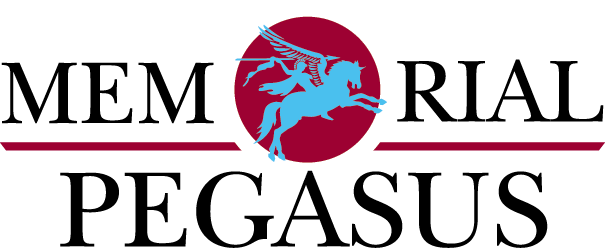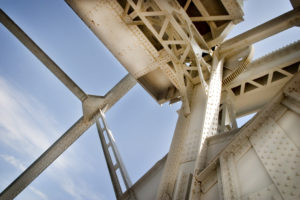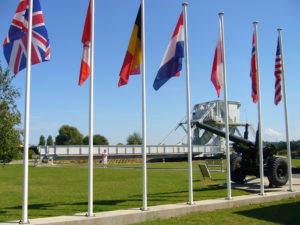[:fr]
Pont levant du Jour le plus long
La prise du pont tournant sur l’Orne à Ranville, construit par Gustave Eiffel en 1871, ainsi que celle du pont levant sur le canal de Caen à Bénouville constituent certainement la mission la plus célèbre de la 6eme division aéroportée britannique. Les 180 soldats du régiment Oxs and Bucks commandés par le Major John Howard se sont posés à bord de planeurs Horsa juste à côté des ponts, le 5 juin peu après minuit. En dix minutes, les ouvrages étaient sous contrôle, l’opération « Coup de main » avait réussi.
A la tête des renforts, les Bérets Verts, commandés par le général Lord Lovat, précédé de son joueur de cornemuse, Bill Millin. Parmi les Bérets Verts, 177 Français commandés par le Commandant Kieffer.
Le 26 juin 1944, le pont sur le canal de Caen fut baptisé « Pegasus Bridge », en hommage aux soldats britanniques qui l’avaient pris et qui portaient sur leur manche l’insigne de Pégase, le cheval ailé de la mythologie grecque. Cet insigne avait été choisi par la romancière britannique Daphné du Maurier, épouse du Général Frederick Browning, qui a commandé toutes les troupes aéroportées britanniques au cours de la Seconde Guerre mondiale.
En 1961, le pont est devenu célèbre grâce au film de Darryl Zanuck “Le jour le plus long”.
Remplacé en 1994 par un nouveau pont, Pegasus Bridge est aujourd’hui exposé dans le parc du Mémorial Pegasus.
The Bridge of the Longest Day
The capture of the River Orne bridge at Ranville and the bridge across the Caen Canal at Bénouville is the most famous mission of the airborne division. 180 troops of the Ox and Bucks Light Infantry, commanded by Major John Howard, captured the bridges after landing in Horsa gliders only metres from their objectives.
In less than ten minutes both bridges had been captured intact. The sea borne reinforcements commanded by Brigadier Lord Lovat, preceded by his bagpiper Bill Millin, were able to cross the waterways to reinforce 6th Airborne Division on the eastern flank. Among these Green Berets, 177 French Commandos commanded by Philip Kieffer.
On June 26th 1944, the Caen Canal bridge was baptised Pegasus Bridge as a tribute to the British troops. Pegasus, the winged horse, was the emblem worn on the sleeves of the men of the airborne division. The insignia was chosen by the author Daphne du Maurier, wife of the wartime commander of British airborne forces General Sir Frederick Browning.
In 1961 the bridge acquired celebrity status due to the D-Day film, produced by Darryl Zanuck, The Longest Day.
Replaced in 1994 by a new bridge the original Pegasus Bridge is now on display in the park of the museum.



